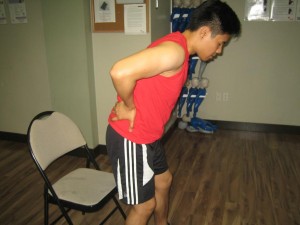Sciatica is any type of pain that is caused by the compression or irritation of the sciatic nerve. The nerve is considered as the longest in the body and spans from the rear part of the pelvis, all the way through the buttocks and both legs and ending at the feet.
Once something irritates or compresses the sciatic nerve, it triggers pain that radiates from the lower back and travels down to your leg and to the calf. Take note that sciatic pain can range from mild to severe.
What are the causes of sciatica?
One of the most common causes of sciatica is a slipped disc but there is no known cause in some cases. The uncommon causes include spinal stenosis or constricting of the nerve passages in the spine, injuries, infection and unusual growth in the spine.
When to consult a doctor
Some individuals with sciatica claim that the pain naturally goes away in a few days or weeks. Nevertheless, it is important to consult a doctor for the following:
- Individual experiences other symptoms along with the leg and back pain such as loss of bowel or bladder control and weight loss.
- Increased discomfort and pain
- Pain that is too severe and could not be managed with self-help measures.
In such cases, the doctor will check whether the pain has other underlying causes.
Treatment for sciatica

Take note that most cases of acute or short-term sciatica typically pass without the need for treatment. If a family member or friend experiences this pain, there are certain measures that you can perform. Initially, you can provide over-the-counter medications, application of cold or hot packs and exercise. All of these can help relieve the symptoms of sciatica. If you want to know how to use ice or cold for pain and injuries, click here.
Using compression packs
Using hot or cold packs can help minimize the pain. You can even create your own cold pack by wrapping a pack of frozen peas in a clean cloth or towel. You can also find these packs readily available in pharmacies and grocery stores.
Exercise
Individuals who have sciatica must stay physically active as possible. Even though bed rest can provide temporary relief for pain, extended bed rest is not needed. The recommended exercises include gentle stretching routines and walking.
As for a persistent case of sciatica, the individual is recommended to undergo an exercise program under the supervision of a physical therapist. In rare cases, surgery might be required to minimize the symptoms.
Preventing sciatica
Sciatica can be avoided by taking into consideration these steps to minimize the risk for back injury or slipped disc.
- Improved posture and lifting techniques
- Performing regular exercises to improve flexibility
- Stretching before and after exercise
By taking into consideration these measures, it can help individuals minimize their risk for slipped disc or back injury that often leads to sciatica.
